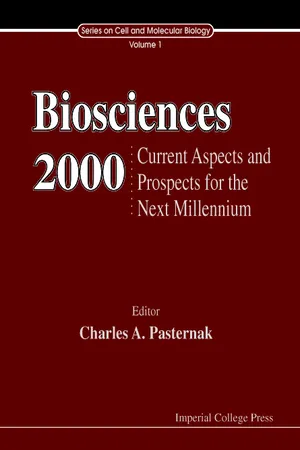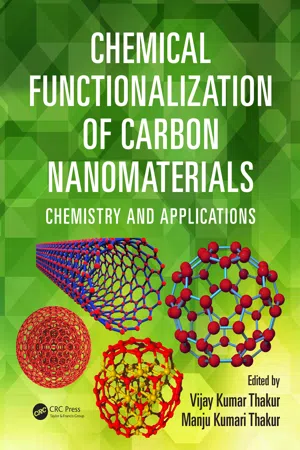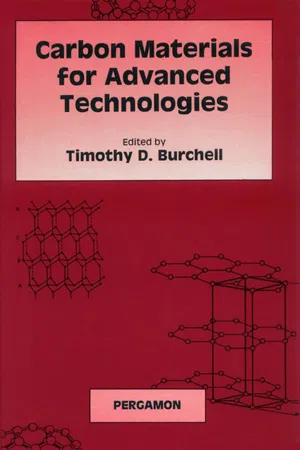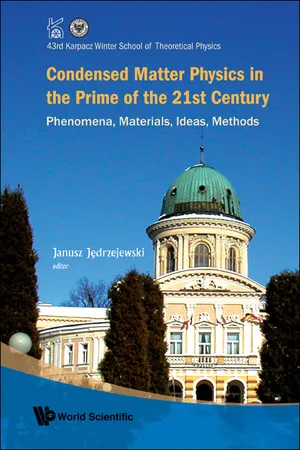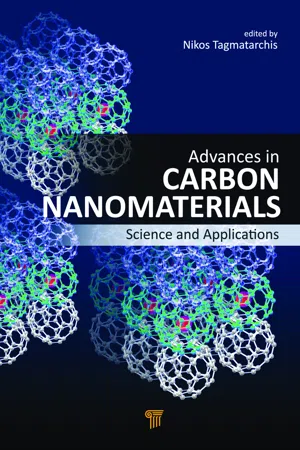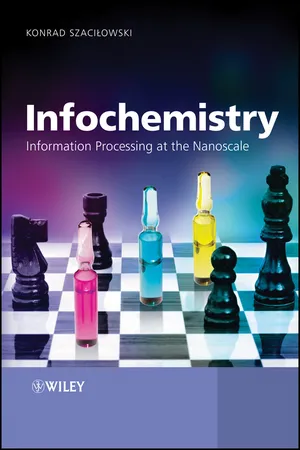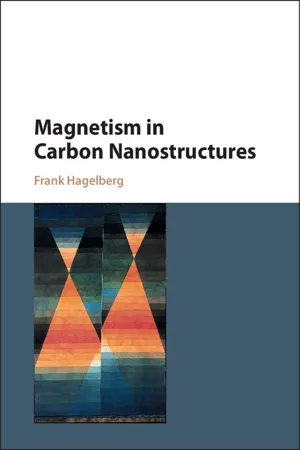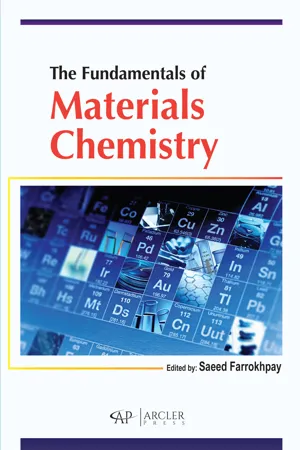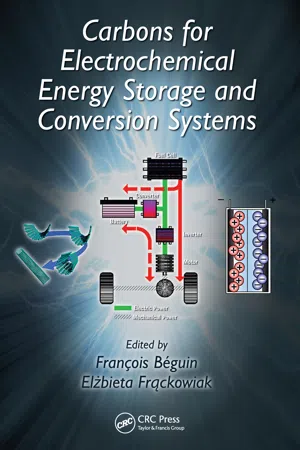Chemistry
Carbon Structures
Carbon structures refer to the various forms and arrangements of carbon atoms, including diamond, graphite, fullerenes, and nanotubes. These structures exhibit diverse properties due to differences in bonding and arrangement of carbon atoms. Understanding carbon structures is crucial in materials science, nanotechnology, and the development of advanced materials with unique properties.
Written by Perlego with AI-assistance
Related key terms
1 of 5
12 Key excerpts on "Carbon Structures"
- eBook - PDF
- Ian A. S. Edwards, Harry Marsh, Rosa Menendez, Harry Marsh(Authors)
- 2013(Publication Date)
- Butterworth-Heinemann(Publisher)
Chapter 1 Structure in Carbons and Carbon Forms I.A.S. Edwards Northern Carbon Research Laboratories, Dept. Of Chemistry, University of Newcastle upon Tyne, Newcastle upon Tyne, NE1 7RU, U.K. Summary. This Chapter introduces the basic structural features of carbon materials, briefly describes and gives definitions of the various carbon forms met with in carbon science and reviews the principal techniques by which the structure of solid carbons can be investigated. Carbon is an element with a unique ability to bond with itself principally via sp 3 (diamond-like) and sp 2 (graphite-like) hybridization. The resultant structures have an immense variety of possibilities but for most of the materials dealt with in carbon science they can be considered as composed of mainly graphitic sub-units, with more or less structural order, linked together by less ordered regions. Two extremes of structural organisation are distinguished as graphitizable and non-graphitizable carbons. The former (cokes) come from carbonaceous precursors which pass through a liquid phase on pyrolysis (e.g. pitches), while the latter (chars) are formed by those which do not fuse (e.g. wood). By utilizing techniques such as X-ray diffraction, optical and electron microscopy, etc., the structural features of carbon materials can be elucidated at various levels of resolution. An estimate of the average crystallite size and perfection can be made from X-ray measurements. The degree of ordering at the micrometer level can be determined using optical microscopy while electron microscopy can be used to reveal the structure at the graphitic plane level. 1 STRUCTURE IN CARBON AND CARBON FORMS Ian A. S. Edwards Northern Carbon Research Laboratories, Department of Chemistry, University of Newcastle upon Tyne, NE1 7RU, U.K. - eBook - PDF
Biosciences 2000: Current Aspects And Prospects Into The Next Millenium
Current Aspects and Prospects for the Next Millennium
- Charles A Pasternak(Author)
- 1999(Publication Date)
- ICP(Publisher)
N A N O T U B E S O F C A R B O N A N D O T H E R M A T E R I A L S C. N. R. RAO, RAHUL SEN, B. C. SATISHKUMAR AND A. GOVINDARAJ Solid State and Structural Chemistry Unit, CSIR Centre of Excellence in Chemistry and Materials Research Centre. Indian Institute of Science, Bangalore 560012, India Carbon nanotubes constitute a new class of materials with novel properties arising from their unique structure. In this article, we discuss the methods of preparation, structural characterization and properties of carbon nanotubes in some detail. The opening, filling and functionalizing these nanotubes are examined. In addition to carbon nanotubes, boron-carbon-nitrogen as well as carbon-nitrogen nanotubes are discussed. It is pointed out that ceramic nanotubes can be made by using carbon nanotubes as templates. Applications of nanotubes are indicated. 1. Introduction Diamond and graphite are the traditional forms of crystalline carbon familiar to us. Diamond has four-coordinate sp 3 carbon atoms forming an extended three dimensional network whose motif is the chair conformation of cyclohex-ane, a puckered six-membered ring molecule. Graphite on the other hand has three-coordinate sp 2 carbons forming planar sheets whose motif is the flat six-membered ring. The new carbon allotropes, the fullerenes, are closed-cage carbon molecules with three-coordinate carbon atoms tiling spherical or nearly-spherical surfaces. The best known of these molecules is Buckminsterfullerene, Ceo, which has sixty carbon atoms forming a truncated-icosahedral structure with twelve pentagonal rings and 20 hexagonal rings as shown in Fig. 1. The structure is essentially that of a soccerball. The coordination at every carbon atom is not planar but rather, slightly pyramidalized at every carbon atom. In other words, some sp 3 character is present in the essentially sp 2 carbons of fullerenes. While regular hexagons can tile a plane, pentagons can tile a sphere. - eBook - PDF
Carbon Nanomaterials
Synthesis, Structure, Properties and Applications
- Rakesh Behari Mathur, Bhanu Pratap Singh, Shailaja Pande(Authors)
- 2016(Publication Date)
- Taylor & Francis(Publisher)
Since the majority of carbon materials are a result of sp 2 hybridization, the structure is explained on the basis of natural or single-crystal of graphite. This will form the basis of the understanding of electronic and band structure of nanoforms of carbon presented in the following chapters. X-ray diffraction and Raman spectroscopy are two important characterization tools that can give a lot of insight into the structure of various forms of carbon and are widely used by researchers to understand the novel and newer forms of nanocarbon. An introductory reference is also provided to x-ray diffraction and Raman spectroscopy used to character- ize the structure of various forms of carbon and should help the reader in understanding the difference when we move from bulk to carbon nanomaterials. 1.1.1 Atomic Structure of Carbon Carbon is a chemical element with the symbol C and atomic number 6 and represented by the electronic orbital structure illustrated in Figure 1.3. As a member of group IV of the periodic table, it is obtained in three naturally occurring isotopes, with 12 C (6 protons, 6 neutrons, nuclear spin I = 0) and 13 C (6 protons and 7 neutrons, nuclear spin I = 1/2) being stable, whereas 14 C (6 protons and 8 neutrons) is radioactive, decaying with a half-life of about 5700 years. The carbon-12 ( 12 C) isotope forms almost 99% of the carbon on earth, while carbon-13 ( 13 C) forms the remaining 1%. Though 14 C is only found in traces (~10 –12 of all carbon atoms), due to its long half-life corresponding to reasonable life scale in human history, measurement on 14 C concentration in organic material (e.g., wood) allows one to date its biological history; this is called carbon dating. A carbon atom with six electrons has the electron configuration 1s 2 2s 2 2 1 p x 2 1 p y in its ground state (lowest energy state), as shown in Figure 1.4. - eBook - PDF
Chemical Functionalization of Carbon Nanomaterials
Chemistry and Applications
- Vijay Kumar Thakur, Manju Kumari Thakur, Vijay Kumar Thakur, Manju Kumari Thakur(Authors)
- 2015(Publication Date)
- CRC Press(Publisher)
Mostly the carbon nanomaterials are classified on the basis of its dimensionality. By this clas-sification, the entire range of dimensionalities is represented in the nanocarbon world, beginning with 0D structures (fullerenes, diamond clusters) and including 1D (nanotubes), 2D (graphene), and 3D (nanocrystalline diamond, fullerite) structures. In a different approach, the classification based on the scale of characteristic sizes of the nanomaterials and this scheme of classification naturally allow more consideration of complicated hierarchical structures of carbon materials such as carbon fibers and carbon polyhedral particles. Also, classification based on different shapes and spatial arrangements of elemental structural units of carbon-caged nanostructures provides a very vivid and useful picture of the numerous forms of Carbon Structures at the nanoscale [44]. Regarding the last approach, the spatial distribution of penta- and hexa-rings within structures also can provide a basis for classification [45]. In terms of a more fundamental basis for the classification of carbon nanostructures, it would be logical to develop a classification scheme based on existing carbon allotropes that is inherently connected with the nature of bonding in carbon materials. Ironically, there is no consensus on how many carbon allotropes/forms are defined at present. From time to time publications appear pro-posing new crystalline forms or allotropic modifications of carbon. Whether fullerenes or carbynes are considered as new carbon allotropes depends to a large extent on the corresponding scientific [46,47]. Sometimes the fullerene community appears to ignore the carbynes, which were discovered in the 1960s, and similarly, the carbyne community does not classify fullerenes as an allotrope [46]. - eBook - ePub
- T.D. Burchell(Author)
- 1999(Publication Date)
- Elsevier Science(Publisher)
CHAPTER 1Structure and Bonding in Carbon Materials
BRIAN McENANEY, Department of Materials Science & Engineering, University of Bath, Bath, BA2 7AY, United Kingdom1 Introduction
The extraordinary ability of the chemical element carbon to combine with itself and other chemical elements in different ways is the basis of organic chemistry and of life. This chemical versatility also gives rise to a rich diversity of structural forms of solid carbon. This introductory chapter is an attempt to survey the very wide range of carbon materials that is now available with emphasis on chemical bonding and microstructure. The materials reviewed include: (i) crystalline forms of carbon: diamond, graphite, Fullerenes and carbynes; (ii) amorphous carbon films and diamond films; (iii) carbon nanoparticles, including carbon nanotubes; (iv) engineering carbons with more-or-less disordered microstructures based on that of graphite that are the main focus of this book.1.1 Bonding between carbon atoms
Here, the bonding between carbon atoms is briefly reviewed; fuller accounts can be found in many standard chemistry textbooks, e.g., [1 ]. The carbon atom [ground state electronic configuration (1s2 )(2s2 2px 2py )] can form sp3 , sp2 and sp1 hybrid bonds as a result of promotion and hybridisation. There are four equivalent 2sp3 hybrid orbitals that are tetrahedrally oriented about the carbon atom and can form four equivalent tetrahedral σ bonds by overlap with orbitals of other atoms. An example is the molecule ethane, C2 H6 , where a Csp3 -Csp3 (or C-C) σ bond is formed between two C atoms by overlap of sp3 orbitals, and three Csp3 -H1s σ bonds are formed on each C atom, Fig. 1, A1 .Fig. 1 Some molecules with different C-C bonds. Al, ethane, C2 H6 (sp3 ); A2, ethene, C2 H4 (sp2 ); A3, ethyne, C2 H2 (sp1 ); B1, benzene, C6 H6 (aromatic); B2, coronene, C24 H12 ; B3, ovalene, C32 H14 - eBook - PDF
Condensed Matter Physics In The Prime Of 21st Century: Phenomena, Materials, Ideas, Methods - 43rd Karpacz Winter School Of Theoretical Physics
Phenomena, Materials, Ideas, Methods
- Janusz Jedrzejewski(Author)
- 2008(Publication Date)
- World Scientific(Publisher)
PHYSICS OF CARBON NANOSTRUCTURES V.A. OSIPOV Joint Institute for Nuclear Research, Bogoliubov Laboratory of Theoretical Physics, 141980 Dubna, Moscow region, Russia [email protected] Carbon is a prominent element that appears in various structures with new promising technological applications. The physics of carbon nanostructures is one of the hot topics in modern condensed matter theory. This is a brief intro-duction into the theory of variously shaped carbon nanostructures with paying special attention to the continuum field-theory models. The review includes a brief historical excursus, the most interesting experimental observations, the formulation of generic field-theory models for the description of electronic states in carbon nanoparticles, and some possible applications. 1. Introduction One of the most prominent advances of the last century was the discovery of the third form of carbon. Doubtless, this finding opened the ”nanocosm” in condensed matter physics with variously shaped carbon nanoparticles serv-ing as the building blocks. Over a long period there were known two main structures of carbon lattices. The first one is a tetrahedral network of two interpenetrating face centered cubic lattices. Four outer electrons of each carbon atom are ’localised’ between the atoms in covalent bonding having sp 3 hybridization. Therefore, the movement of electrons is restricted and, as a result, this material does not conduct an electric current. Certainly, this is a diamond, the hardest known natural substance. There is a princi-pally different carbon lattice having a layered structure. In this case, each carbon atom is covalently bonded ( sp 2 hybridization occurs) to three others in the same plane. The bond angle is equal to 120 ◦ , so that carbon atoms form six-membered rings (the hexagonal structure). The fourth electrons form much weaker π bonds. There are also weak van der Waals forces be-tween the layers. - eBook - PDF
Advances in Carbon Nanomaterials
Science and Applications
- Nikos Tagmatarchis(Author)
- 2012(Publication Date)
- Jenny Stanford Publishing(Publisher)
2 Encyclopedia of Carbon Nanoforms Figure 1.1. Summary of different carbon forms, taken from ref. 8. perhaps make an exception for carbon, because it says everything to everyone.” 1 Carbon is, indeed, an extraordinary element. The electronic configuration of 1s 2 2s 2 2p 2 allows carbon atoms to form three different types of bonding, i.e., single, double, and triple bonds. This versatility of carbon to bond with other atoms is based on the fact that carbon can hybridize its 2s and 2p atomic orbitals in three different manners: sp 3 (for single bonding, tetrahedral), sp 2 (for double bonding, trigonal planar), and sp (for triple bonding, linear). The carbon family tree traditionally covered graphite, diamond, and amorphous carbons, with the more recent addition of fullerenes and carbon nanotubes (see Fig. 1.1). However, in reality, due to the unique bonding versatility of carbon, the true range of carbon nanoforms is significantly richer than this. Theoretical calculations and experimental studies predict out-standing physicochemical properties for many of these, which has led to an explosion of new carbon nanoforms being investigated. This exponential increase, in turn, has led to a bewildering growth in names (especially with view to sp 2 -based carbon nanostructures), often with little or no attempt to standardize with other reports in the literature. The result is that it is increasingly difficult to identify the structure of a carbon nanomaterial based on its name. The same Introduction 3 Figure 1.2. Transmission electron micrographs depicting a similar type of material named differently in different papers, (a) bamboo-shaped carbon tube, 4 (b) “stacked-cup”-like structure carbon nanotubes, 5 and (c) “stacked-cones.” 6 materials are sometimes referred to by different names depending on the authors (see Fig. 1.2), while in other cases the same name is used for different nanomaterials. - J Michael T Thompson, Giles Davies(Authors)
- 2007(Publication Date)
- ICP(Publisher)
CHAPTER 1 THE SHAPE OF CARBON: NOVEL MATERIALS FOR THE 21ST CENTURY Humberto Terrones* and Mauricio Terrones Advanced Materials Department, IPICyT Camino a la Presa San Jos´ e 2055, Lomas 4 a Secci´on 78216 San Luis Potos´ ı, SLP, M´ exico ∗ E-mail : [email protected] Carbon is one of the elements most abundant in nature. It is essential for living organisms, and as an element occurs with several morphologies. Nowadays, carbon is encountered widely in our daily lives in its var-ious forms and compounds, such as graphite, diamond, hydrocarbons, fibers, soot, oil, complex molecules, etc. However, in the last decade, carbon science and technology has enlarged its scope following the dis-covery of fullerenes (carbon nanocages) and the identification of carbon nanotubes (rolled graphene sheets). These novel nanostructures possess physico-chemical properties different to those of bulk graphite and dia-mond. It is expected that numerous technological applications will arise using such fascinating structures. This account summarizes the most relevant achievements regarding the production, properties and applica-tions of nanoscale Carbon Structures. It is believed that nanocarbons will be crucial for the development of emerging technologies in the following years. Keywords : Carbon, nanotubes, nanoelectronics, nanodevices, curvature. 1. Introduction Various forms of carbon including graphite, diamond, and hydrocarbon molecules have been intensively studied since the beginning of the 20th cen-tury. In 1924, J. D. Bernal successfully identified the crystal structure of 7 8 H. Terrones and M. Terrones graphite and in the 1940s developments of carbon alloys such as spheroidal graphite (SG) in cast iron were carried out. Rosalind Franklin distinguished graphitizing and nongraphitizing carbons in the early 1950s. From the 1950s to 1970s carbon fibers were produced and developed for industrial applica-tions.- eBook - ePub
Infochemistry
Information Processing at the Nanoscale
- Konrad Szacilowski(Author)
- 2012(Publication Date)
- Wiley(Publisher)
Chapter 5 Carbon Nanostructures ‘God runs electromagnetics by wave theory on Monday, Wednesday, and Friday, and the Devil runs them by quantum theory on Tuesday, Thursday, and Saturday.’ Sir William Bragg5.1 Nanoforms of Carbon
Due to the unique ability to form chemical bonds with various s + p hybridization manifolds carbon offers the greatest versatility for useful structures. The four valence electrons of carbon can form sp , sp 2 and sp 3 bond configurations. This predetermines the ability of carbon atoms to form various linear, planar and three-dimensional structures. All these structures may be classified into three categories: diamontoids (with mainly sp 3 hybrids), graphenes, fullerenes and related structures (with sp 2 hybrids dominating) and polyyne and cumulene chains (with sp hybrids) [1–6]. The most promising properties from an infochemical point of view are represented by compounds which belong to the second group. Along with different forms of carbon (fullerenes, graphene, nanotubes, nanohorns) [2, 3, 7] various hydrocarbons and other compounds are based on the same type of hybridization. These compound families include polycyclic systems of different geometries (benzenoid and non-benzenoid ) and chemical identities (from fully aromatic to fully antiaromatic) [8–10], linear macromolecules [11–15], dendrimers [16, 17] and so on. There is just one common feature of all these species – sp 2 hybridization. This makes all these systems suitable for various (nano)electronic applications due to their propensity to delocalize valence electrons over the whole molecule, which is the result of efficient overlap of the p z orbitals of the carbon atoms.Along with pure nanocarbons, there are countless molecular systems with high carbon contents. These unsaturated, highly conjugated molecule s are of great importance for both theoretical investigations [8] and future applications in molecular-scale information processing [17–20]. These materials include fullerenic polymer s [21], acetylenic polymer s [11, 22–24], oligoacene - eBook - PDF
- Frank Hagelberg(Author)
- 2017(Publication Date)
- Cambridge University Press(Publisher)
Part II Carbon and Its Nanoscale Allotropes 4 Graphene In this chapter, as well as the following two, we present the structural protoypes of carbon nanosystems, namely graphene, carbon nanotubes and fullerenes. These represent nanoscopic allotropes of carbon in two, one and zero dimensions. With respect to the dimensionality and also to the chronology of carbon nanostruc- ture research, Chapters 4 to 6 of this text go in reverse order. The reason for this choice is the fundamental significance of graphene for intrinsic magnetism in carbon-based materials. Besides providing general information about graphene, this chapter introduces the dimensionally reduced graphene nanoribbons. The zigzag types of these species have been shown to display magnetism in their ground state and may be understood as the basic units of carbon nanostructure magnetism. In elemental carbon, four valence electrons occupy the 2s and 2 p x / p y orbitals, yielding the occupation scheme 1s 2 , 2s 2 , 2 p 2 for the electronic shell of the car- bon atom. The ground state of the carbon atom is, in spectroscopic notation, 3 P 0 , involving a spin triplet in conjunction with a total orbital angular momentum L = 1, and a total angular momentum J = 0. This configuration confines carbon to two chemical bonds only, as exemplified by the carbene CH 2 . Carbon compounds, however, usually involve three or four bonds. This is achieved by promoting a 2s electron into a 2 p orbital, which leads to the formation of hybridized molecular orbitals. We distinguish between sp, sp 2 and sp 3 hybridization. In these cases, the 2s and two 2 p orbitals combine, giving rise to two (sp), three (sp 2 ) or four (sp 3 ) mixed s - p orbitals, as represented by linear combinations of atomic orbitals of s and p character. In the regime of carbon-based molecules and polymers, examples for these hybridization schemes are provided by acetylene (the sp case), poly- acetylene (sp 2 ), and methane (sp 3 ). - eBook - PDF
- Saeed Farrokhpay(Author)
- 2023(Publication Date)
- Arcler Press(Publisher)
INTRODUCTION TO CARBON MATERIALS 5 CONTENTS 5.1. Introduction .................................................................................... 122 5.2. The Graphite Family........................................................................ 126 5.3. The Diamond Class ......................................................................... 130 5.4. The Fullerene Family ....................................................................... 136 References ............................................................................................. 137 CHAPTER The Fundamentals of Materials Chemistry 122 5.1. INTRODUCTION Carbon (C) is an atomic number 6 element. The Periodic Table of Elements places it in Group 4. Carbon has three allotropes: diamond, graphite, and fullerene (Figure 5.1). Graphite and diamond have densities of 3.52 and 2.26 grams per centimeter cube, correspondingly (Buckley and Edie, 1993; Dresselhaus and Avouris, 2001). Figure 5.1. There are three carbon allotropes which are: (a) graphite, with the two hues illustrating the A and B layers in the AB stacking pattern; (b) diamond; (c) fullerene. There are pentagons and hexagons to be found. Sources: https://www.tf.uni-kiel.de/matwis/amat/iss/kap_4/advanced/t4_2_1. html#_dum_3; https://www.tf.uni-kiel.de/matwis/amat/iss/kap_4/illustr/i4_2_1. html; http://www.gcsescience.com/a38-buckminsterfullerene.htm. Introduction to Carbon Materials 123 5.1.1. Graphite The carbon atoms in graphite are sp 2 hybridized, which means that each carbon has three covalent linkages (bonds) oriented to three distinct carbon atoms in a similar plane (Figure 5.1(a)). With the aid of the π-π interaction, the 4 th valence electron that isn’t engaged in the sp 2 hybridization of C is delocalized, resulting in in-plane metallic bonding. As a result, bonding inside the film is a covalent bonding and combination of metallic. - Francois Beguin, Elzbieta Frackowiak, Francois Beguin, Elzbieta Frackowiak(Authors)
- 2009(Publication Date)
- CRC Press(Publisher)
Structure and Texture of Carbon Materials 45 2.2.4 D IAMOND F AMILY Diamond consists of sp 3 -hybridized carbons, in which the purely covalent chemical bonds extend three-dimensionally. Diamond is very hard and electrically insulating. To construct a diamond crystal, a periodic and regular repetition of the C–C bond is required in a long range. For a couple of carbon atoms indicated as A and B in Figure 2.10a, the carbon atom A has to be connected with four carbon atoms, including B, to make a tetrahedron because of directional sp 3 bonds, and the atom B has also to be surrounded by four carbon atoms, including A. Looking down these two tetrahedra centered on the A and B atoms along their connecting line, there are two possibilities in mutual relation between the two basement triangles consisting of three car-bon atoms, which give two crystal structures. If these two basement triangles are rotated with respect to each other by 60°, as shown in Figure 2.10b, the resultant diamond crystal belongs to the cubic system (cubic diamond, Figure 2.10b'). If there is no rotation between these two basement triangles (Figure 2.10c), the structure belongs to the hexagonal system (hexagonal diamond, Figure 2.10c') [16]. Most of the diamond crystals, either occurring in nature or syn-thesized, are cubic. In the case where a long-range periodicity is not attained between interconnected tetrahedra (Figure 2.10a), in other words, in the case of a random rotation between the two basement tri-angles of tetrahedra, an amorphous structure is formed [17]. Because of a random rotation between tetrahedra, some carbon atoms cannot form chemical bonds with the neighboring carbon atoms, most of which are supposed to be connected with hydrogen atoms for stabilization. This is usu-ally obtained as a thin film, mainly because a random repetition of tetrahedra is difficult to keep on a long distance, and is called diamond-like carbon (DLC) [17].
Index pages curate the most relevant extracts from our library of academic textbooks. They’ve been created using an in-house natural language model (NLM), each adding context and meaning to key research topics.

